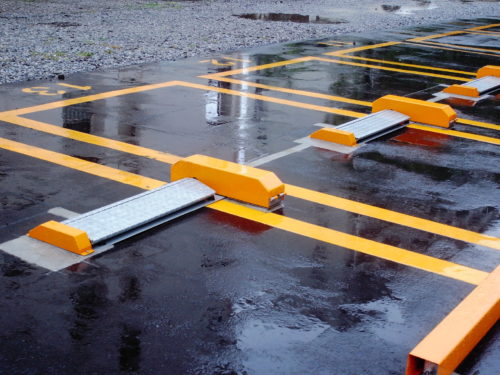
How Can Asphalt Paving Be Good For Water Drainage?

Our parking lot repair San Antonio specialists explain that proper drainage is extremely important for any parking lot or roadway for many reasons. The last thing you want is large areas of standing water in your paved area, as this can be directly responsible for large repair jobs and liability concerns.
And that notwithstanding, it just doesn’t convey a good image of your business if there are standing pockets of water in several areas of the parking lot. Not to mention the potholes and cracks that are inevitably going to form if this continues for the long term and this not good for your ADA parking lot compliance sidewalks.
Asphalt Paving Good For Water Drainage
Here’s how properly installing your asphalt paving can be good for water drainage:

It’s important for you to know how asphalt paving can be better that concrete before you choose the type of material for your paving and our concrete work San Antonio team know best. Any type of asphalt is good for water drainage and should definitely be your top choice when deciding to pave your parking lot or roadway. But some types of asphalt are better than others.
Coloring Options Are Now Available For Asphalt
But only if you install and maintain it in the proper way because there can be many causes of asphalt deterioration and how to prevent it.
Have any questions? call us today!
210-914-6122
Get in touch
Use the Slope to Your Advantage
This will help protect your asphalt paving from serious water damage over time and is something any reputable pavement installer should automatically take care of from Day One.
If your pavement is already existing, however, be sure you stay on top of sealing cracks and patching potholes so that the water that does collect isn’t doing any significant damage.


Be Mindful of Harsh Winter Weather
Nobody wants to be outside for extended periods of time when the weather is below freezing, but it’s absolutely essential in order to keep your asphalt paving in good condition during this time of the year.
If water gets into any existing cracks during the winter months, the damage can be even worse due to freezing conditions. If the temperature is below the freezing point, the crack can expand many times over as the water freezes and unfreezes.
This is where proper drainage is especially important as explained by our seal coating San Antonio TX professionals.
